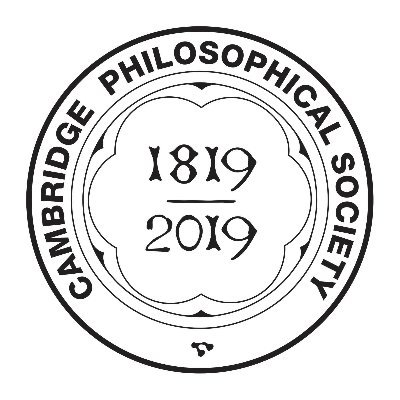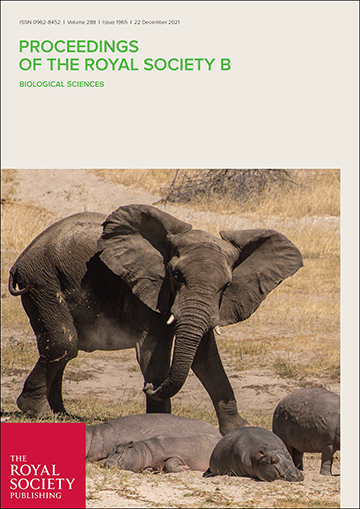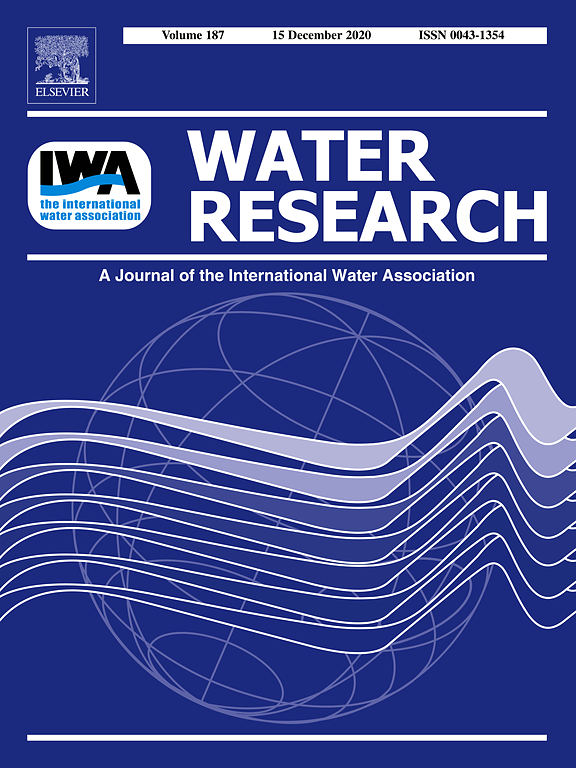Please find all scientific publications of IGB under > scientific publications
For more detailed information please refer to our > library catalogue
271 - 280 of 747 items
November 2024
FEMS Microbiology Ecology. - 100(2024)11, Art. fiae139
Metabarcoding reveals ecologically distinct fungal assemblages in river and groundwater along an Austrian alpine to lowland gradient
Alice Retter; Christian Griebler; R. Henrik Nilsson; Johannes Haas; Steffen Birk; Eva Breyer; Federico Baltar; Clemens Karwautz
November 2024
Biological Reviews. - 100(2025)2, 855-870
Shedding light on biodiversity: reviewing existing knowledge and exploring hypothesised impacts of agrophotovoltaics
Rachel Schwarz; Yaron Ziv
November 2024
Water Resources Research. - 60(2024)9, Art. e2024WR037508
Attributing Urban Evapotranspiration From Eddy‐Covariance to Surface Cover: Bottom‐Up Versus Top‐Down
H. J. Jongen; S. Vulova; F. Meier; G. J. Steeneveld; F. A. Jansen; D. Tetzlaff; B. Kleinschmit; N. Haacke; A. J. Teuling
Evapotranspiration (ET) is an important process in the water cycle that can help reduce heat stress in cities. However, it is dependent on surface cover. The study provides insights that can inform urban planning and water management decisions, including improving the living environment of city dwellers.
November 2024
Journal of Hazardous Materials. - 479(2024), Art. 135675
Distinct influences of altitude on microbiome and antibiotic resistome assembly in a glacial river ecosystem of Mount Everest
Xin Liao; Liyuan Hou; Lanping Zhang; Hans-Peter Grossart; Keshao Liu; Junzhi Liu; Yuying Chen; Yongqin Liu; Anyi Hu

November 2024
Limnology and Oceanography : Methods. - 23(2024)1, S. i-iii, 1-86
Modular shadowgraph imaging for zooplankton ecological studies in diverse field and mesocosm settings
Adam T. Greer; Patrick I. Duffy; Tim J. W. Walles; Charles Cousin; Laura M. Treible; Kyle D. Aaron; Jens C. Nejstgaard
October 2024
Proceedings of the Royal Society B: Biological Sciences. - 379(2024)1916, 20230508
Divergent age-related changes in parasite infection occur independently of behaviour and demography in a wild ungulate
Gregory F. Albery; Adam Z. Hasik; Sean Morris; Alison Morris; Fiona Kenyon; David McBean; Josephine M. Pemberton; Daniel H. Nussey; Josh A. Firth

October 2024
JAMES. - 16(2024)10, Art. e2024MS004275
A Lake Biogeochemistry Model for Global Methane Emissions: Model Development, Site-Level Validation, and Global Applicability
Zeli Tan; Huaxia Yao; John Melack; Hans-Peter Grossart; Joachim Jansen; Sivakiruthika Balathandayuthabani; Khachik Sargsyan; L. Ruby Leung
October 2024
Water Research. - 268(2024), Art. 122602
Epilimnetic oligotrophication increases contribution of oxic methane production to atmospheric methane flux from stratified lakes
Fan Xun; Muhua Feng; Cheng Zhao; Wenlei Luo; Xiaotong Han; Zhen Ci; Yifan Yin; Rong Wang; Qinglong L. Wu; Hans-Peter Grossart; Peng Xing

October 2024
Oecologia. - 206(2024), 275-292
Variable habitat use supports fine‑scale population differentiation of a freshwater piscivore (northern pike, Esox lucius) along salinity gradients in brackish lagoons
Timo D. Rittweg; Clive Trueman; Michael Wiedenbeck; Jan Fietzke; Christian Wolter; Lauren Talluto; Stefan Dennenmoser; Arne Nolte; Robert Arlinghaus
October 2024
Nature Reviews : Earth & Environment. - 5(2024), 755-772
Hydropower impacts on riverine biodiversity
Fengzhi He; Christiane Zarfl; Klement Tockner; Julian D. Olden; Zilca Campos; Fábio Muniz; Jens-Christian Svenning; Sonja C. Jähnig
The authors discuss the impacts of hydropower on aquatic and semi-aquatic species and how the impacts accumulate spatially and temporally across basins. They recommend the STREAM framework: Systematic planning, Tracking hydropower impacts, Responsive adaptive management strategies, Elimination of hydropower infrastructure, Assessment of socioecological trade-offs, and Multi-actor decision-making.







